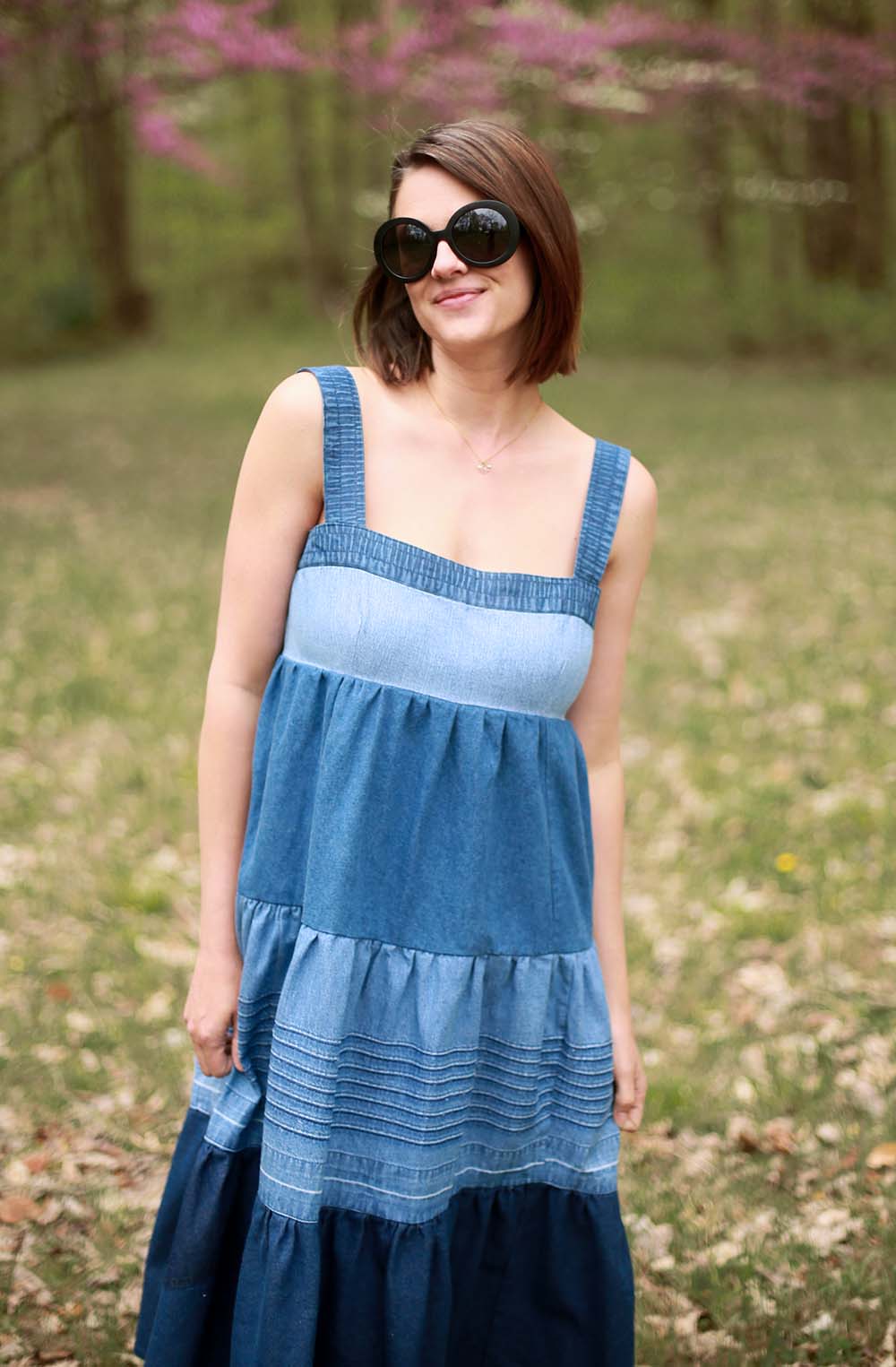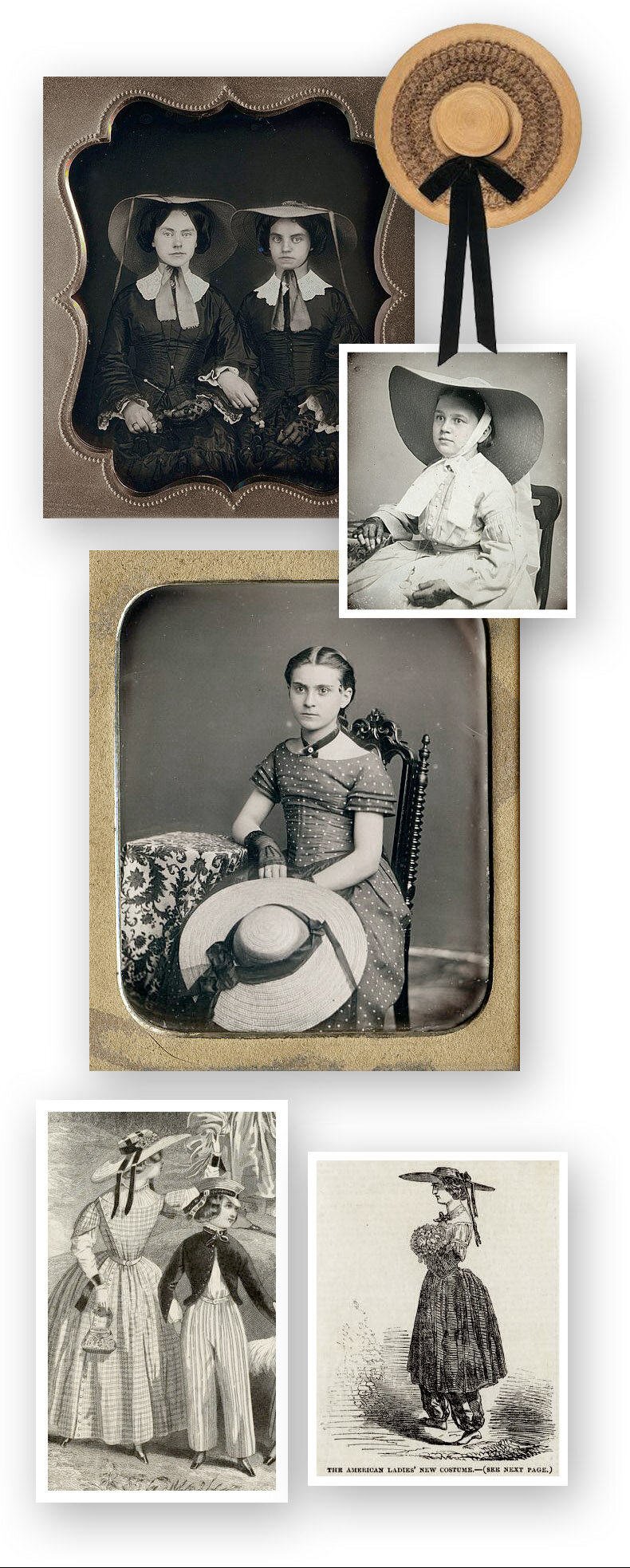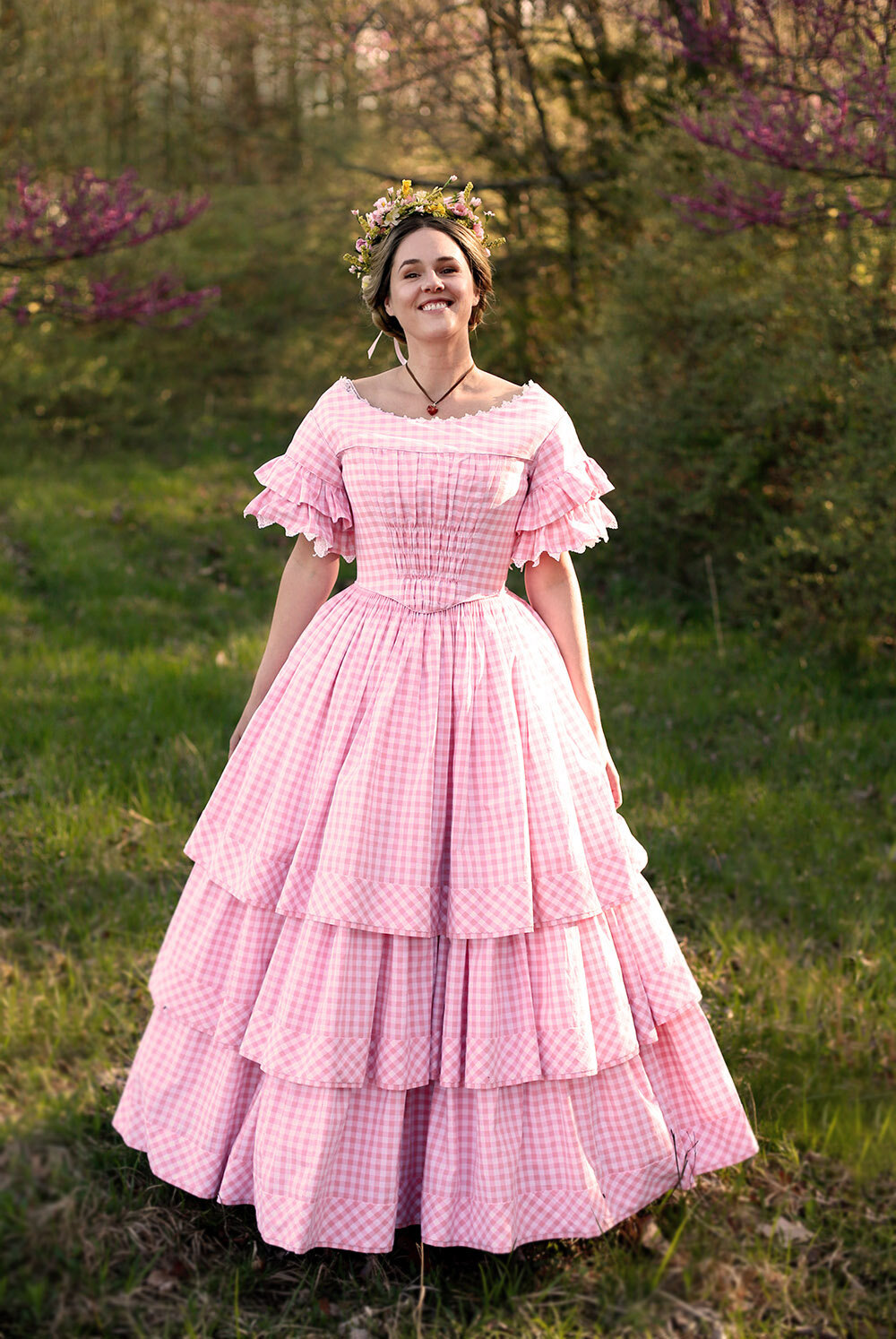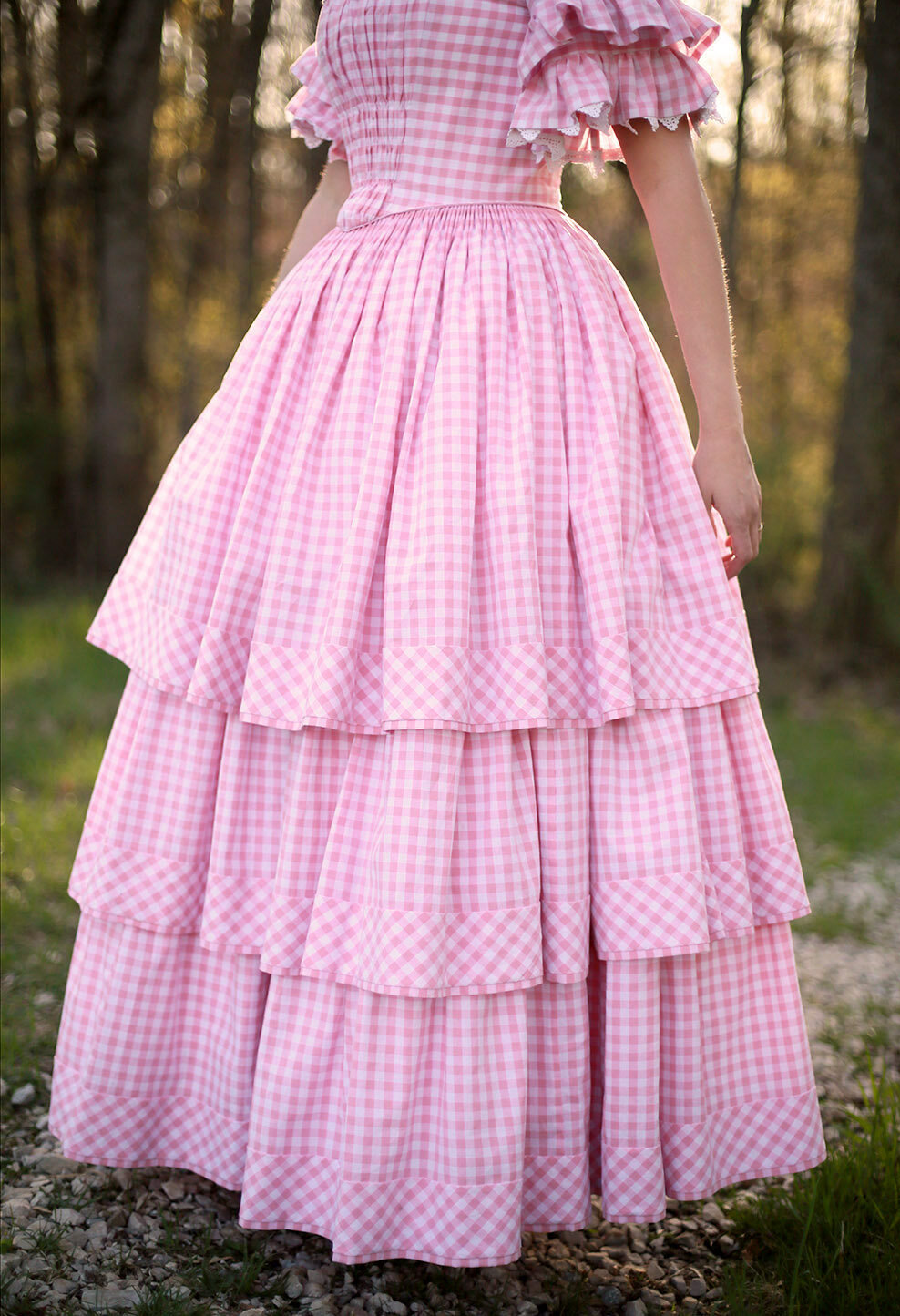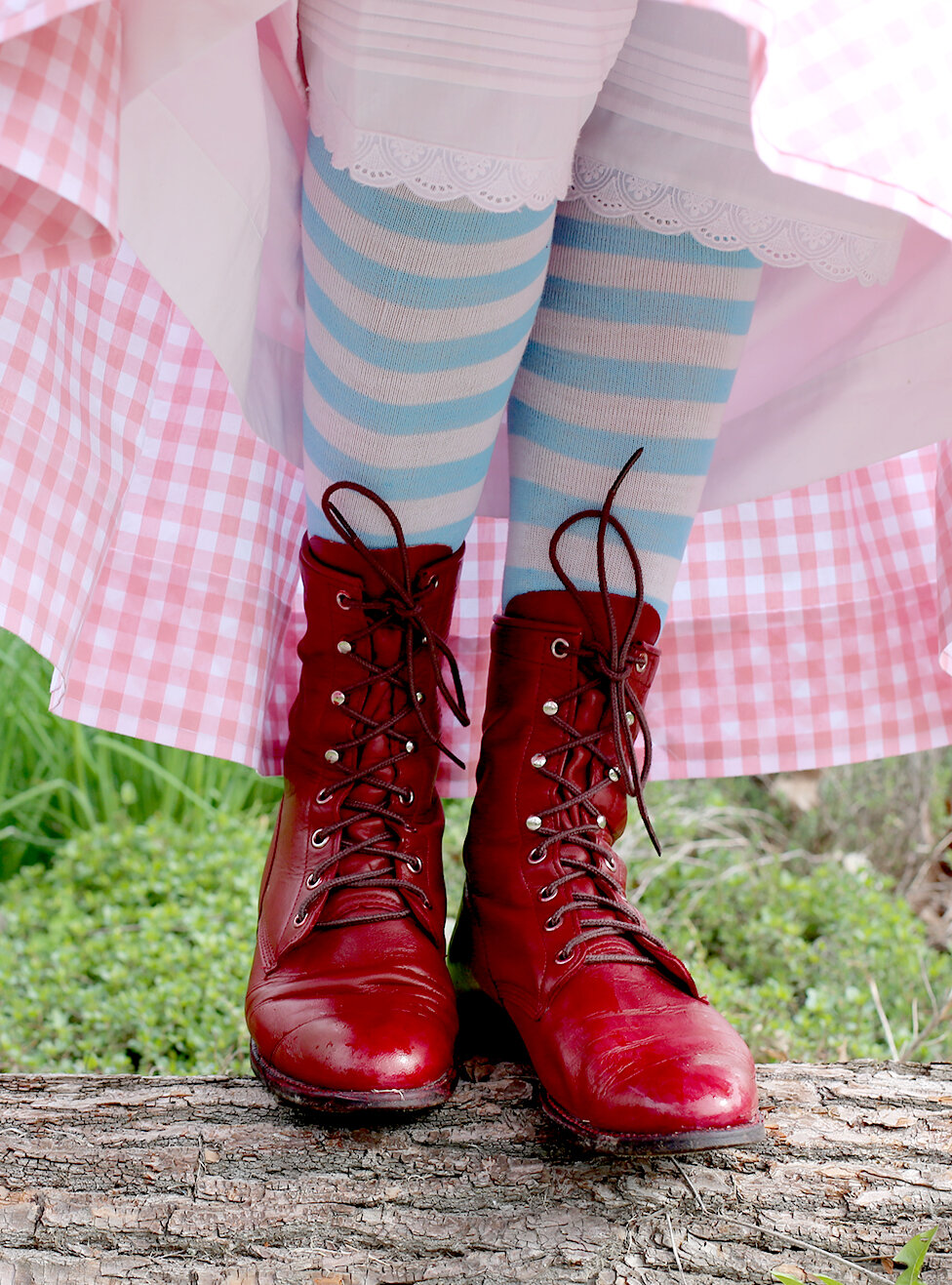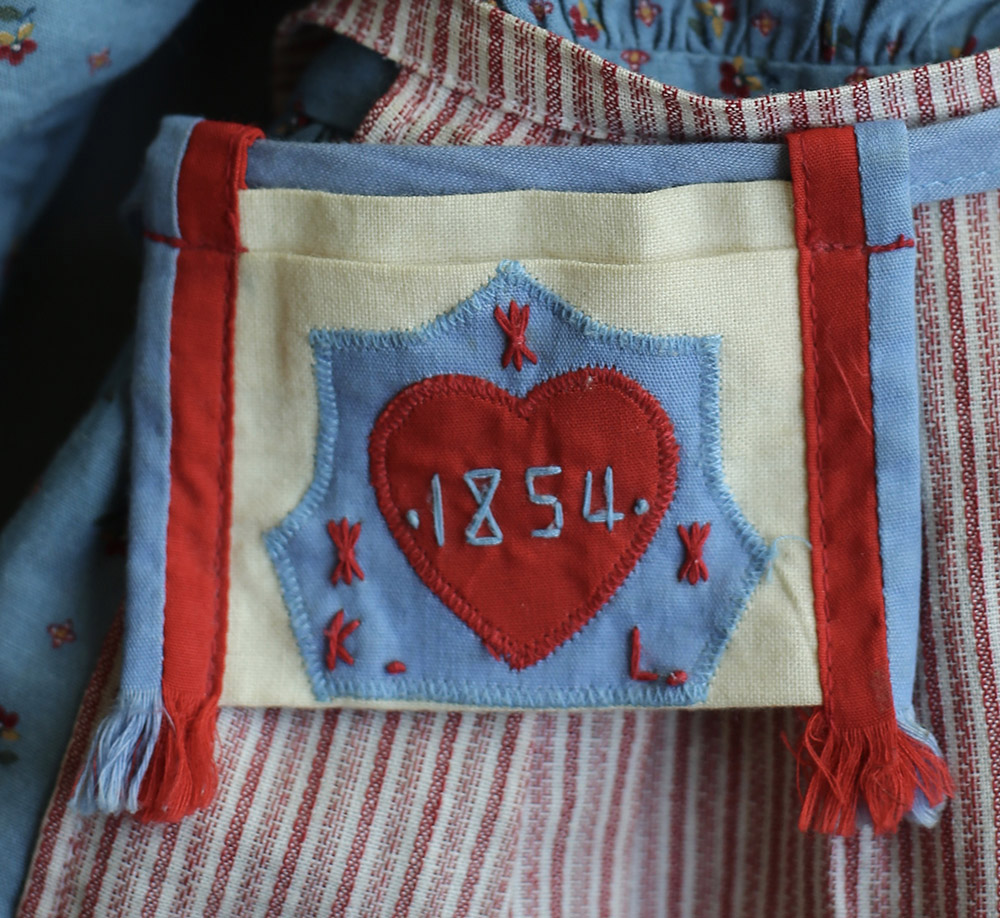The Kirsten Project | Wide Brim Straw Hats
/When I think of the 1850s and headwear, my first thoughts lean towards bonnets of all kinds - soft corded bonnets like I wore for my Meet Kirsten costume, or the straw or silk varieties seen in countless daguerrotypes or museums. Yet, when I looked hard enough I found plenty of examples of wide brim straw hats, like the one Kirsten receives at the end of Kirsten Saves the Day.
Above: Various Daguerrotypes, mid 19th century, Straw Hat with Black Ribbon, 1863, Les Arts Décoratifs, Sketch, Bloomer Costume July 1851, Sketch, Godey’s Lady’s Book, March 1853
I’ve taken a bit of a break from social media and blogging, but I hope I can conjure up the energy to put the finishing touches on this costume and to photograph it before the summer ends! I hope you’re all well and taking care of yourselves and each other.

